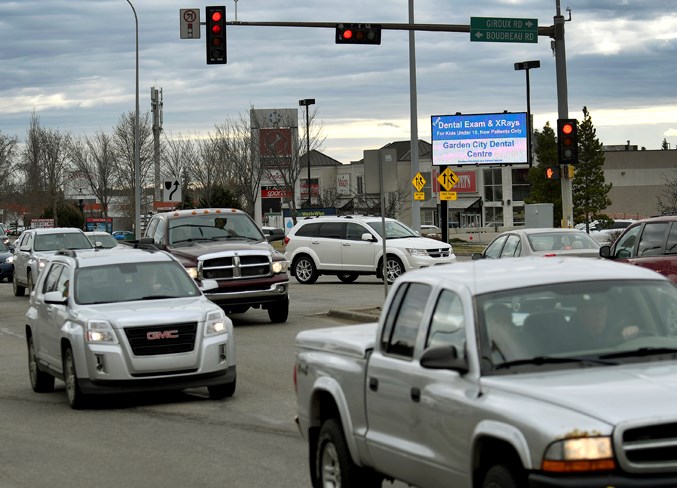Road rage is going online as drivers voice their frustration with the city’s traffic lights.
Tammy Morris posted on the Facebook group St. Albert Chat Sunday morning that the lights at Boudreau Road and Bellerose Drive were not synced.
“We've been waiting for (20 minutes) at (the) lights,” she wrote. “DO NOT use this route. Traffic is backed up all the way up the hill.”
Other users quickly chimed in to tell their stories about how the traffic lights in the city need to be improved.
Sherry Munroe said she works in downtown Edmonton and the lights add to her commute time.
“It takes me 20 minutes from north (of) St. Albert to (the) Superstore (and then) 15 minutes from there to get to downtown Edmonton,” Munroe wrote. “This city has no idea how to sync the lights.”
Yvonne Bach Lavoie wondered how St. Albert drivers could be so patient given how many times people stop at lights.
“Takes forever to get across St. Albert,” she wrote.
In total, the city has 62 traffic lights to serve the population of roughly 66,000. An up-to-date traffic count report is expected to be posted on the city’s website in a few weeks.
Transportation manager Dean Schick said the city is working on transitioning to a new traffic light system that would be more adaptive in nature. Right now, the city’s traffic lights work through detection: A camera picks up a vehicle when it approaches a light and puts in a call to turn the lights from red to green.
Schick explained traffic has a designated cycle time to allow for all movement in an intersection. For St. Albert Trail, this cycle is about 166 seconds, which is the amount of time to ensure everyone gets a turn – including pedestrians.
“When people say, for example, 'I need more time for a left turn,' you can’t just add more time,” he said.
“In order for co-ordination along the corridor, all the cycle lengths have to be the same along the corridor."
That means if, say, people in a northbound left lane need 10 more seconds, another direction of traffic loses 10 seconds to compensate. The total always has to add up to 166 seconds.
Schick said someone waiting on a side street could be seeing delays because the northbound and southbound lanes on St. Albert Trail are the priority. This is meant to co-ordinate the corridor so traffic moves more smoothly.
This changes during off-peak hours when the system switches to a more first-come, first-served basis but at the expense of no co-ordination along the corridor.
Schick said having this free system could result in someone seeing a lot of stops at lights, which could lead to their frustration.
“That’s something that the adaptive style looks to improve on those efficiencies and those multiple stops,” he said.
“As you shift to a completely adaptive system or the artificial intelligence side of things, it is removing that manual confirmation and actual manual change and it is doing the shifts and the changes (to traffic volume) on its own. I wouldn’t call it a full AI system. There are alternative systems moving forward we may look into that go more into that artificial intelligence, but right now the system we’re looking at here in 2018 is an adaptive system but I wouldn’t say it was a full-scale artificial intelligence system.”
In September, Schick told city councillors the city had begun to roll out adaptive signal control along the south end of St. Albert Trail, with plans to eventually have the system running city-wide. At the time, Mayor Cathy Heron said people using other roads and arterials would not experience the change yet.
The city’s full intelligent transportation systems strategic plan and implementation strategy can be found online at the St. Albert website.




